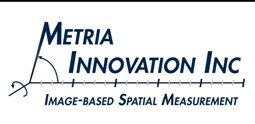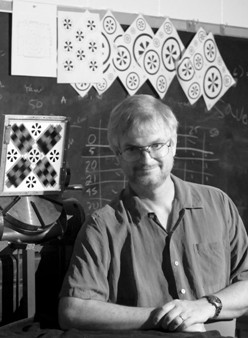|
Metria Innovation, Inc. |
||
|
June 17, 2013 Issue |
||
|
The Most Powerful Name In Corporate News and Information |
||
|
Metria Innovation, Inc. is bringing to market the first Moiré Phase Tracking (MPT) System – an Optical Motion Tracking Technology that will allow for Motion Correction and Accurate Results during a Medical MRI (Magnetic Resonance Imaging) Scan |
||
|
Metria Innovation, Inc. was founded in 2008 by Armstrong, Kusik and Barrows to commercialize Moiré Phase Tracking (MPT) technology, the disruptive 3D tracking technology based on optical moiré patterns. With funding from private investors, NIH and other sources, Metria’s founders have brought the MPT technology from conception through prototype testing to commercial application. MPT was originally conceived to accurately measure golf club angle during club-ball impact. Elite golfers have the ability to control club angles (loft, lie and club face angle) to within +/- 0.1 degrees, so a tool to measure performance and provide feedback had to achieve this accuracy, without contact and at high speed. Today MPT achieves high-speed measurement with +/-0.02 degree sensitivity and can automatically and simultaneously track up to 256 MPT motion tracking markers.
Metria’s first commercial
opportunity is motion tracking for prospective motion correction during
medical Magnetic Resonance Imaging (MRI). Eleven systems have already been
installed in the US and Europe. In this application, Metria’s MPT system
measures patient head movements to within +/-0.05 milli-meters and +/-0.05
degrees, and continuously reports movements to the MRI scanner console,
where specialized software developed by partners corrects the imaging
process many times per second. The result is a clear image, even if the
patient moves. Metria continues to deploy its system for MRI, while
developing new market opportunities.
Dr. Armstrong is president and co-founder of Metria Innovation, Inc., and is a Professor of Electrical Engineering and Computer Science at the University of Wisconsin-Milwaukee. He has B.Sc. degrees in Physics and Mechanical Engineering from MIT, and a Ph.D. in Electrical Engineering (Robotics) from Stanford and extensive experience in 3D sensing, estimation, robotics and real-time systems. He has participated in and led research and development projects at the Mitsubishi Electric Product Development Laboratory (Amagasaki, Japan) and Information Technology Center – Europe (Rennes, France). Dr. Armstrong has published over 100 papers and abstracts, has 13 U.S. and international patents issued, and has several additional patents pending. Dr. Armstrong was previously the CEO of MetriCam, Inc., and earlier the Chief Technology Officer of Go Sensors, Inc. He has directed the development of Moiré Phase Tracking (MPT) technology, including a multi-year project that achieved a 1000x speedup of MPT image processing and adaptation of the technology to operate in Magnetic Resonance Imaging (MRI) scanners. |
Optical
Metria Innovation, Inc.
|
|
|
Interview conducted by: Lynn Fosse, Senior Editor. CEOCFO Magazine, Published – June 17, 2013
CEOCFO: Dr. Armstrong, would you tell us your vision when you founded Metria and where are you today? Dr. Armstrong: Our vision is to apply advanced optical technology to the 3D motion tracking challenges of our customers.
CEOCFO: What is advanced optical tracking? Dr. Armstrong: Metria has a unique and patented optical motion tracking technology that allows us to measure where things are in space, and to take measurements as objects move. As an example, one application we are working with is magnetic resonance imaging. Patients move while they are in the scanner, and anybody who has had a scan knows that the MRI technician will tell them repeatedly to hold very still. Our MPT technology provides a motion tracking signal that can be used with a motion correction system. Our MPT technology is well suited to this environment. It is non-contact, operates with a single camera and fits in a small space. We can make nearly 100 measurements per second, and achieve the +/- 0.1 degree measurement accuracy that is required for the highest resolution MR images. Metria’s MPT system is the only commercially available motion tracking system that can achieve this.
CEOCFO: What have you figured out technologically that others have not, in order to allow you to provide the accuracy? Dr. Armstrong: The heart of our technology is the use of the optical phenomenon known as moiré patterns to determine angles. Through the innovative use of moiré patterns, the MPT motion tracking marker amplifies the optical signature of angles by about a thousand times, which enables the MPT technology to detect the angles much more accurately than other optical motion tracking technologies.
CEOCFO: I am assuming that the medical profession has been looking for something better. Dr. Armstrong: Firstly, I should say that MPT technology has not received FDA approval, and so it can only be used for research. And yes, what are called motion artifacts have always been a major challenge for the use of MRI. Metria’s component is the motion tracking system. What began as a concept for golf grew into a research project. Now, that research project has grown into a translational technology, translating from the research laboratory into commercial practice.
CEOCFO: What are the steps you are taking to transfer from one to the other? Dr. Armstrong: Our effort has been focused on meeting the requirements technically, and also in the terms of the business process, to be able to provide the optical motion tracking technology for biomedical researchers. There is a significant regulatory approval process that is required before a new technology can be used clinically. We are pursuing a partnership that will move forward with the regulatory approval process. At the same time, a portion of our activity is directed towards developing new market opportunities.
CEOCFO: Are you able to talk about what you are looking at? Dr. Armstrong: Yes, one area in particular is gait assessment in the physical therapy clinic. Gait is the movement of the hips and legs during walking. A range of medical conditions have an impact on gait, such as arthritis or rehabilitation following knee or hip surgery. There is a need for a new technology for the physical therapy clinic because available systems are complex to use and place heavy demands on space and expertise. Our moiré phase tracking technology is inherently compact and easy to use. Manual evaluation of the sensor data by an expert, which would never be practical in a PT clinic, is never required.
CEOCFO: Will all of these be with partnerships or on your own; or is that still to be determined? Dr. Armstrong: Forming strategic partnerships is one of the principal goals of Metria Innovation. We have a platform technology, if you will, through which we can take 3D measurements in ways that no one else can. There is a variety of different fields of use, and rather than try to grow out the expertise along with everything which would be required for Metria to be a presence in each of those fields of use, we see strategic partnerships as the path forward.
CEOCFO: Are the industries that you are looking at generally aware of what you have accomplished and are capable of, or are you still under the radar? Dr. Armstrong: There is a growing awareness. A number of people have contacted us, but I would say we still have a long way to go in this area.
CEOCFO: Which of your patents is most meaningful to you? Dr. Armstrong: I would say patent 6,384,908, which is the foundational patent for the technology.
CEOCFO: Are you aware of others who are looking at the same area or are you in a niche alone? Dr. Armstrong: Optical 3D tracking systems have been in use for half a century and there are a variety of other technologies. But no one has anything similar to our use of moiré patterns to get an accurate measurement, and especially accurate angular measurement, with a single camera.
It is an interesting situation that we face when comparing and contrasting the magnetic resonance imaging application with the gait assessment / physical therapy application. With MRI, commercially available prospective motion correction is completely new, and there is no other motion tracking system that can come close to doing what we do, so in that aspect we are in a niche alone. With gait assessment, there are several well-established vendors of optical motion tracking technology for human movement, and the various technologies have advantages and disadvantages. For this opportunity, we are facing competition head on.
CEOCFO: Are you funded as you continue to grow or will you be seeking funding? Dr. Armstrong: We are currently seeking to recruit business leadership and we see that as our next step. We are currently developing the company with internal resources; we were profitable in 2011 and 2012, and we are looking to be profitable in 2013. We are very interested in accelerating growth, and funding may play a role in that, but we see the first step as recruiting an executive to Metria who will bring business expertise.
CEOCFO: Where are the profits coming from now? Dr. Armstrong: Our two sources of revenue are sales of MPT systems and small business innovative research (SBIR) grants. The small business innovative research program was created by Congress in the 1980s and provides an opportunity for funding to develop innovative technology. Metria has two SBIR several awards.
CEOCFO: On your website, it shows customization. Is that something you are frequently asked to do, and if so are you interested in that or rather mass-producing? Dr. Armstrong: Each application for 3D motion tracking presents its own unique challenges. Our mission is to enable users to meet their 3D measurement challenges with innovative technology, and customization is definitely a part of that.
As for mass production, we are certainly interested in applications where there will be sales volume. In the biomedical applications, there are applications with requirements for tens of thousands of units. Because our motion tracking capability is a technology platform with many possible uses, strategic partnerships will be an important vehicle for reaching the volume applications.
CEOCFO: Why should people pay attention to Metria, and why is it an exceptional company?
Dr.
Armstrong:
We have a unique and well-protected technology, which is
going to have a significant impact in several fields. With the MRI
opportunity, authorities in the industry make the case that essentially all
scanners will have motion correction installed over the next fifteen to
twenty years, and that will be a very significant opportunity for Metria. |
||
|
“Through the innovative use of moiré patterns, the MPT motion tracking marker amplifies the optical signature of angles by about a thousand times, which enables the MPT technology to detect the angles much more accurately than other optical motion tracking technologies.”- Brian Armstrong |
||
|
|
||
|
Optical Motion Tracking System, Metria Innovation, Inc., Technology Company, CEO Interviews 2013, Moiré Phase Tracking System, MPT System, Motion Correction, Accurate Results during Medical MRI Scan, Magnetic Resonance Imaging, Recent CEO Interviews, Technology Stock, MPT Technology, Metria Innovation, Inc. Press Releases, News, Companies looking for venture capital, Angel Investors, private companies looking for investors, technology companies seeking investors, optical motion tracking companies needing investment capital |
||

